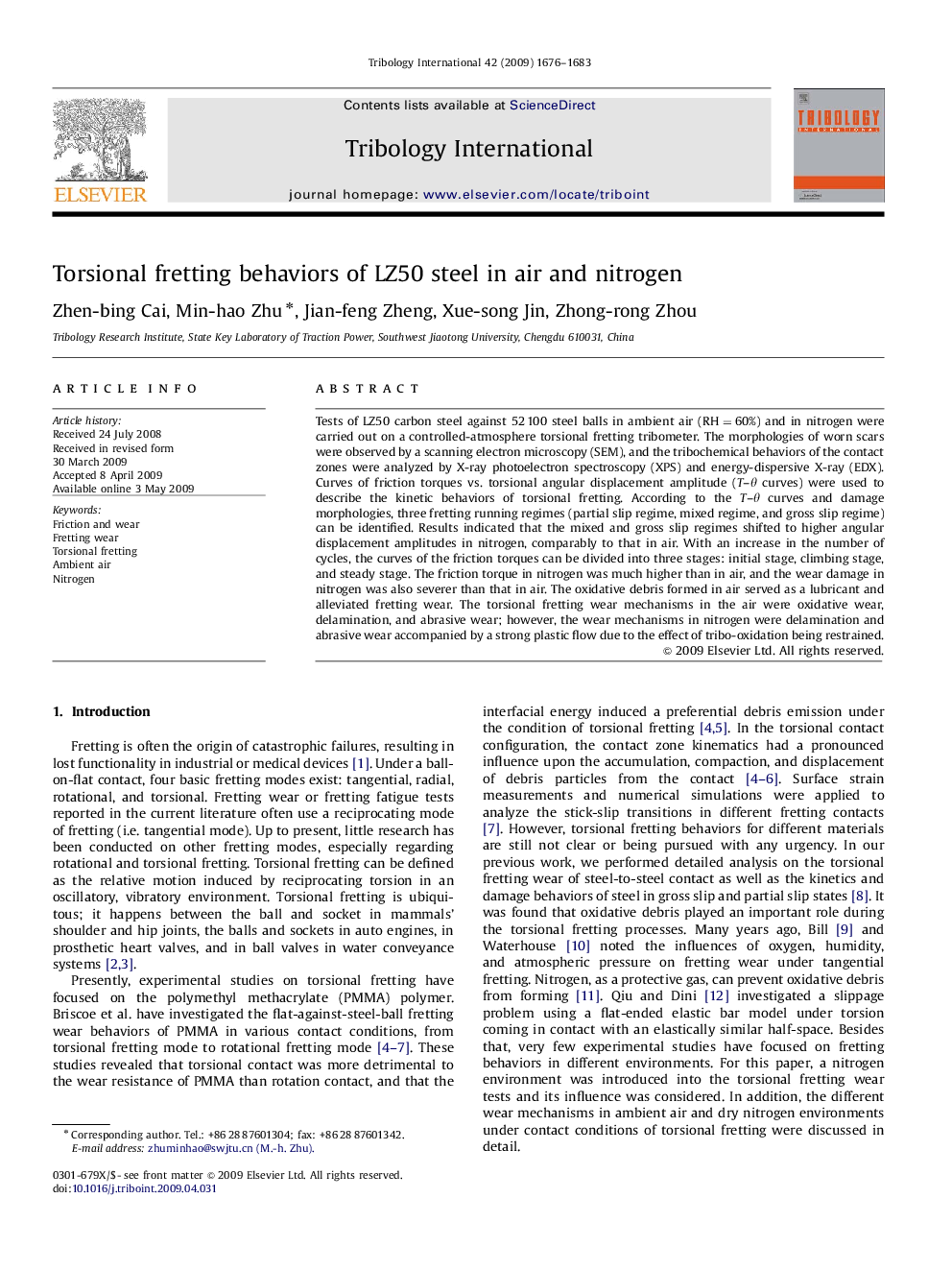| کد مقاله | کد نشریه | سال انتشار | مقاله انگلیسی | نسخه تمام متن |
|---|---|---|---|---|
| 616069 | 1454861 | 2009 | 8 صفحه PDF | دانلود رایگان |

Tests of LZ50 carbon steel against 52 100 steel balls in ambient air (RH=60%) and in nitrogen were carried out on a controlled-atmosphere torsional fretting tribometer. The morphologies of worn scars were observed by a scanning electron microscopy (SEM), and the tribochemical behaviors of the contact zones were analyzed by X-ray photoelectron spectroscopy (XPS) and energy-dispersive X-ray (EDX). Curves of friction torques vs. torsional angular displacement amplitude (T–θ curves) were used to describe the kinetic behaviors of torsional fretting. According to the T–θ curves and damage morphologies, three fretting running regimes (partial slip regime, mixed regime, and gross slip regime) can be identified. Results indicated that the mixed and gross slip regimes shifted to higher angular displacement amplitudes in nitrogen, comparably to that in air. With an increase in the number of cycles, the curves of the friction torques can be divided into three stages: initial stage, climbing stage, and steady stage. The friction torque in nitrogen was much higher than in air, and the wear damage in nitrogen was also severer than that in air. The oxidative debris formed in air served as a lubricant and alleviated fretting wear. The torsional fretting wear mechanisms in the air were oxidative wear, delamination, and abrasive wear; however, the wear mechanisms in nitrogen were delamination and abrasive wear accompanied by a strong plastic flow due to the effect of tribo-oxidation being restrained.
Journal: Tribology International - Volume 42, Issues 11–12, December 2009, Pages 1676–1683